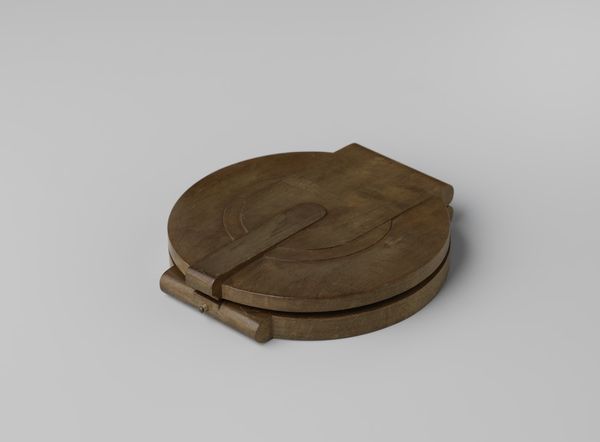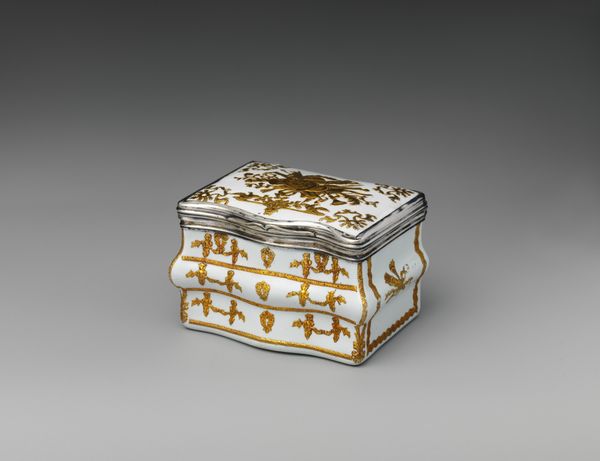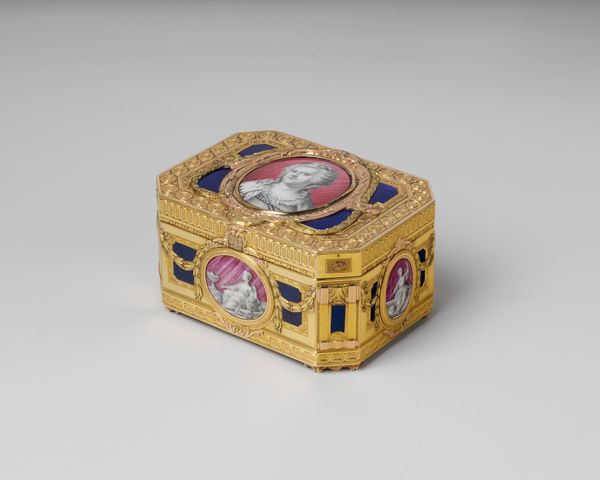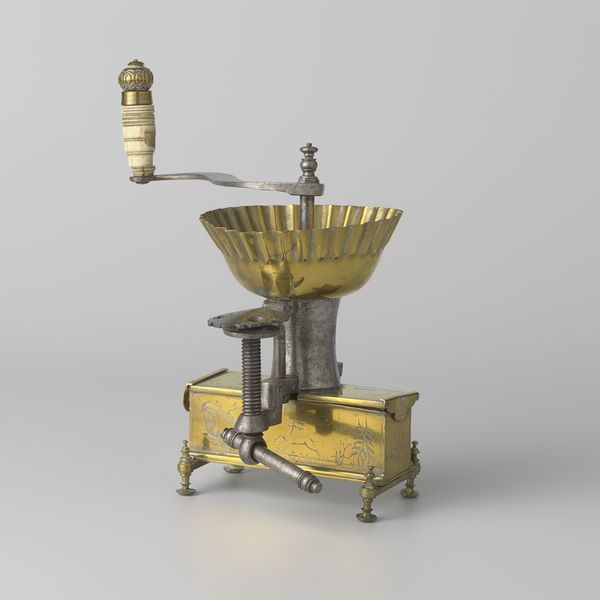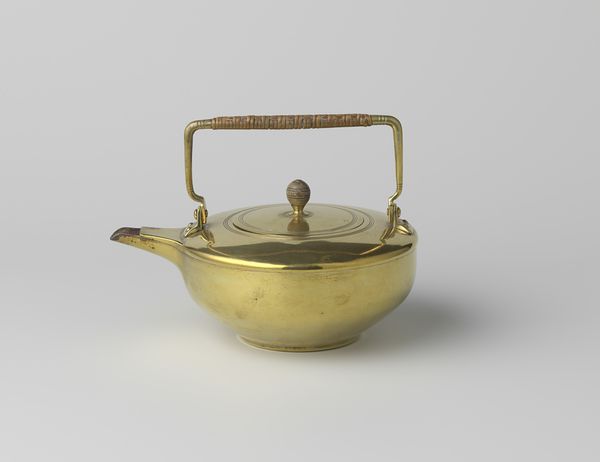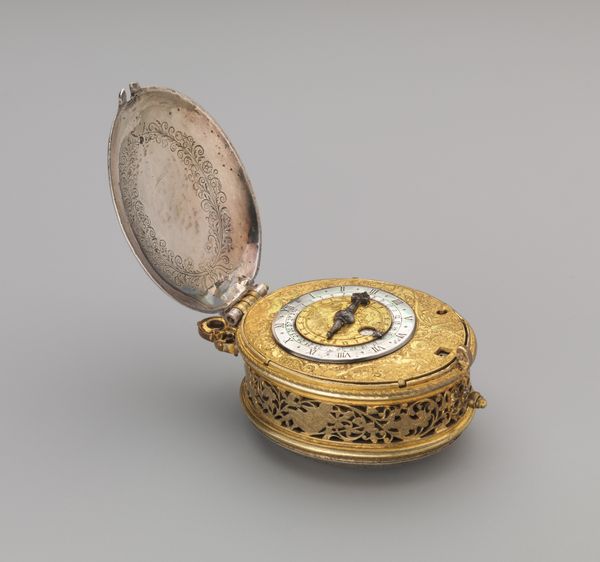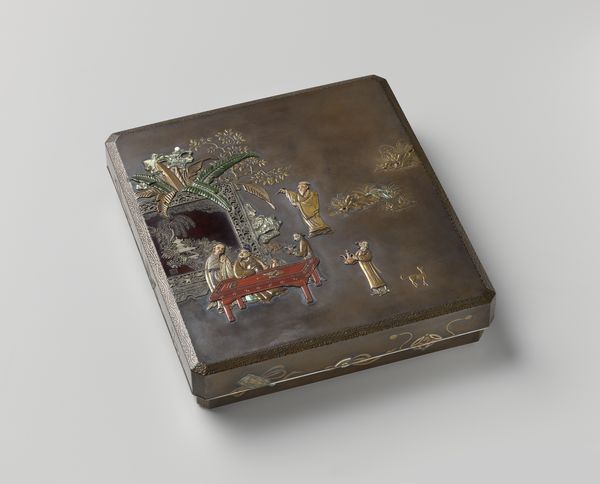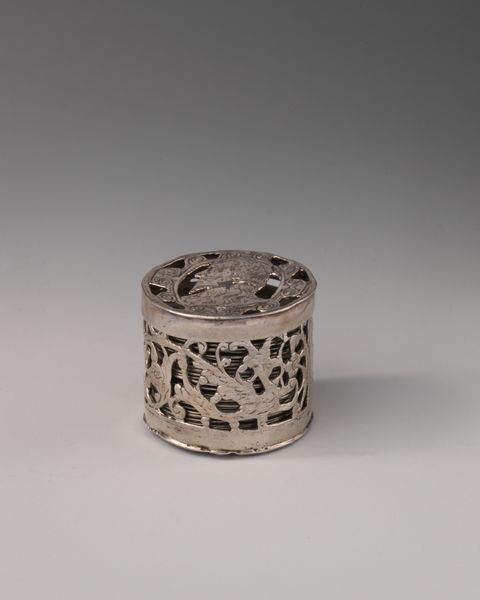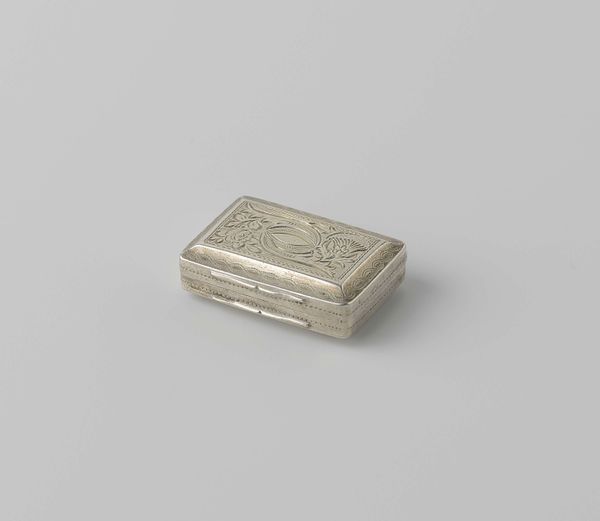
metal, wood
#
3d model
#
3d rendering
#
art-nouveau
#
architectural modelling rendering
#
metal
#
plastic material rendering
#
virtual 3d design
#
front view render
#
architectural render
#
metallic object render
#
wood
#
architectural proposal
#
decorative-art
#
architecture render
Dimensions: height 4.1 cm, height 10.3 cm, length 28.6 cm, width 17.9 cm
Copyright: Rijks Museum: Open Domain
Editor: This is Theo Nieuwenhuis's "Inktstel van messing en tropisch hout," or brass and tropical wood inkstand, dating from before 1910. It feels so ornamental, almost precious, given its everyday function. What strikes you when you look at it? Curator: Well, isn’t it something? It takes me back to a time when even the most mundane objects possessed an inherent artistry, an almost theatrical presence. The art nouveau flourishes, that lovely dance between metal and wood... it whispers of leisurely correspondence, of thoughts carefully considered before being committed to paper. I wonder, though, did Nieuwenhuis ever pause to consider the carbon footprint of shipping that tropical wood? Probably not, eh? Does the piece spark anything else in you? Editor: The details are incredible, especially the contrasting geometric patterns. Was there a particular fascination with mixing materials like this at the time? Curator: Absolutely! There was a real yearning to elevate everyday objects, a kind of democratic impulse in design. Brass and wood were favoured, offering that satisfying contrast of warmth and cool, texture and sheen. And those geometric patterns, they echo the broader art nouveau movement’s embrace of stylized natural forms. Each element fighting for attention, but settling peacefully into one exquisite composition. Did our friend Theo ever get a papercut, I wonder? It's so tactile. Editor: It makes you want to write a letter, doesn’t it? It seems that art nouveau strived to add grace to every facet of living. Curator: Exactly. And perhaps remind us to find beauty and intrigue in unexpected places. Almost makes me want to dust off my fountain pen! I love the potential this art piece carries: writing and beauty. What a magnificent blend!
Comments
No comments
Be the first to comment and join the conversation on the ultimate creative platform.

